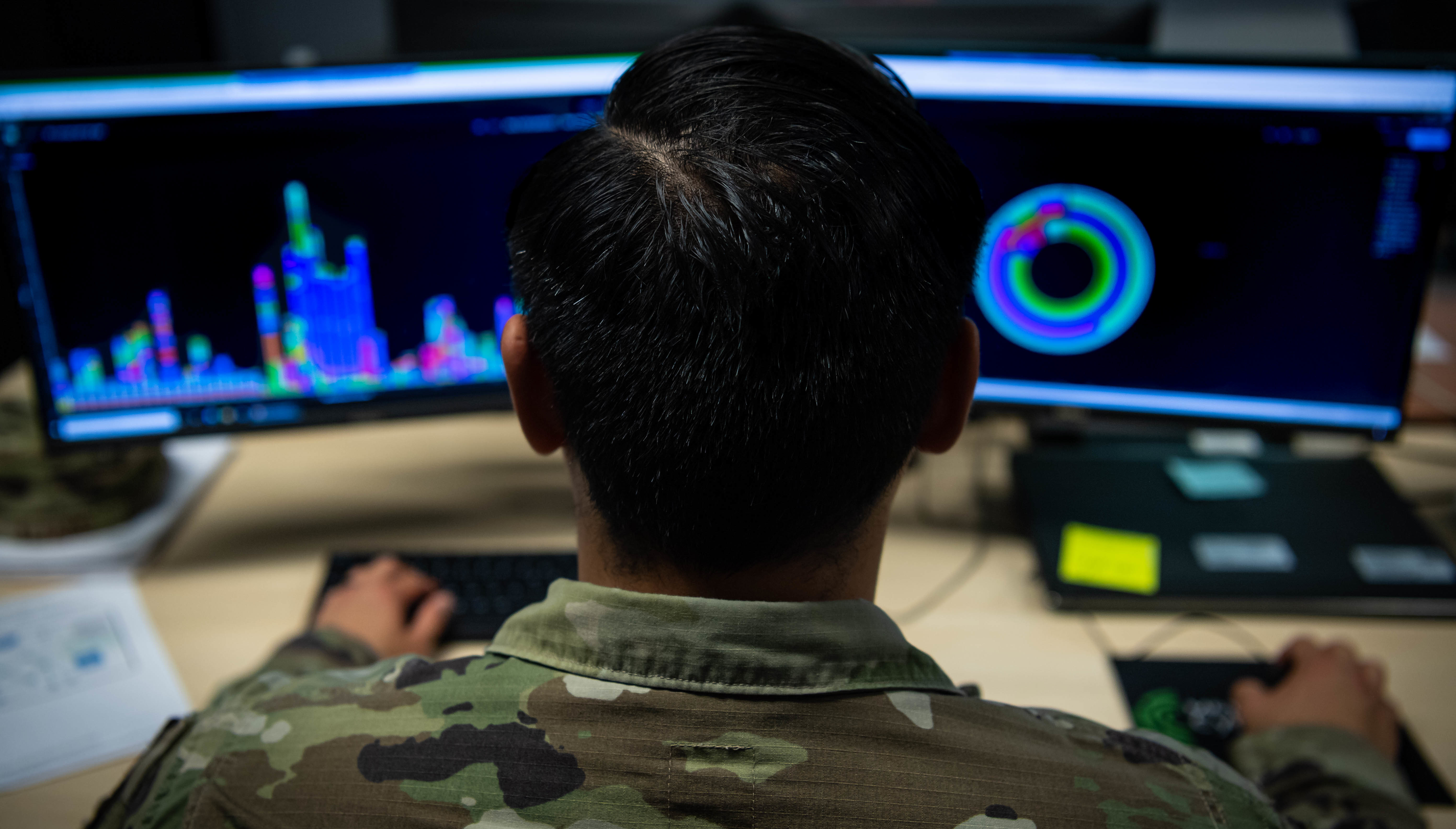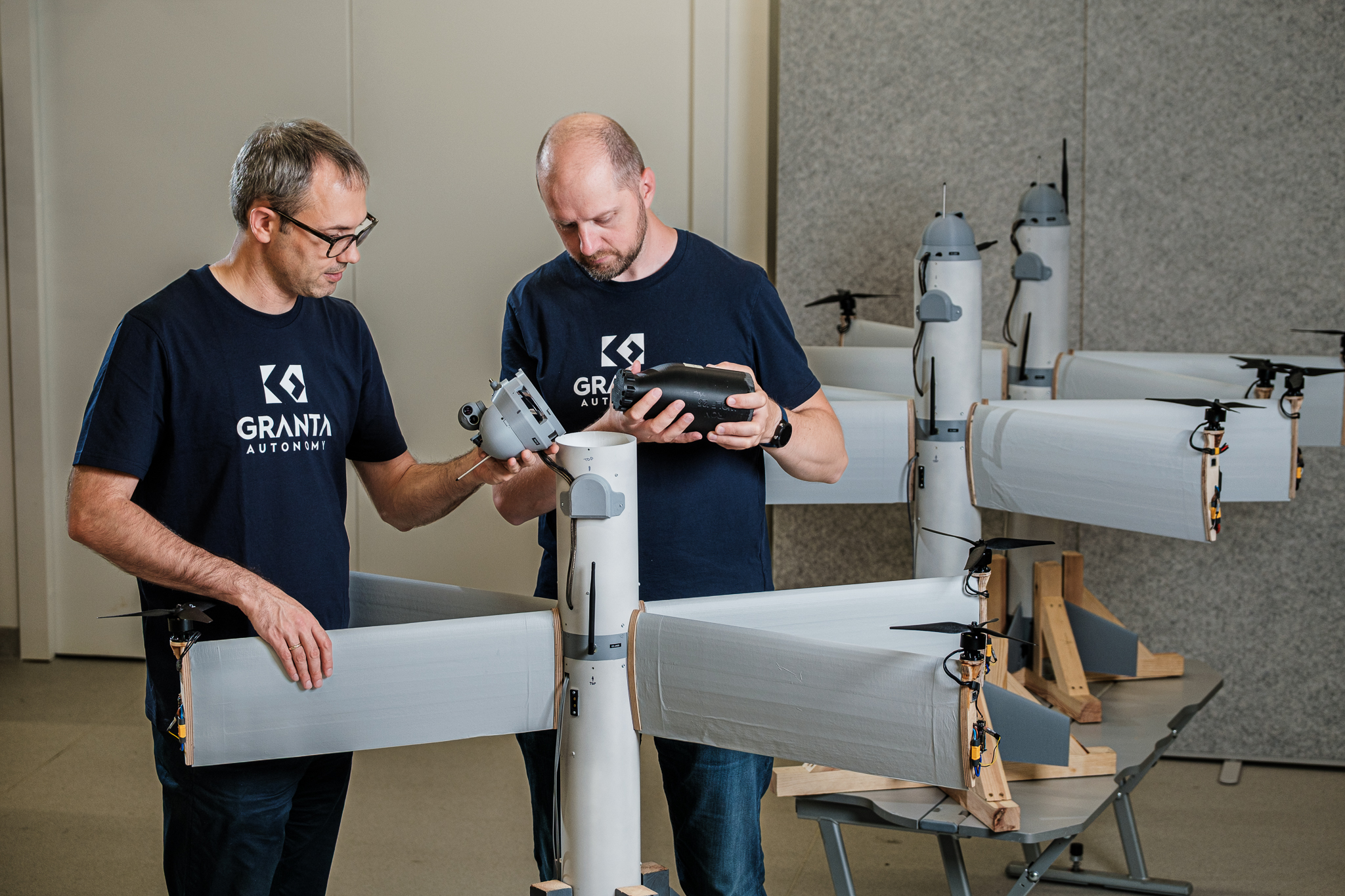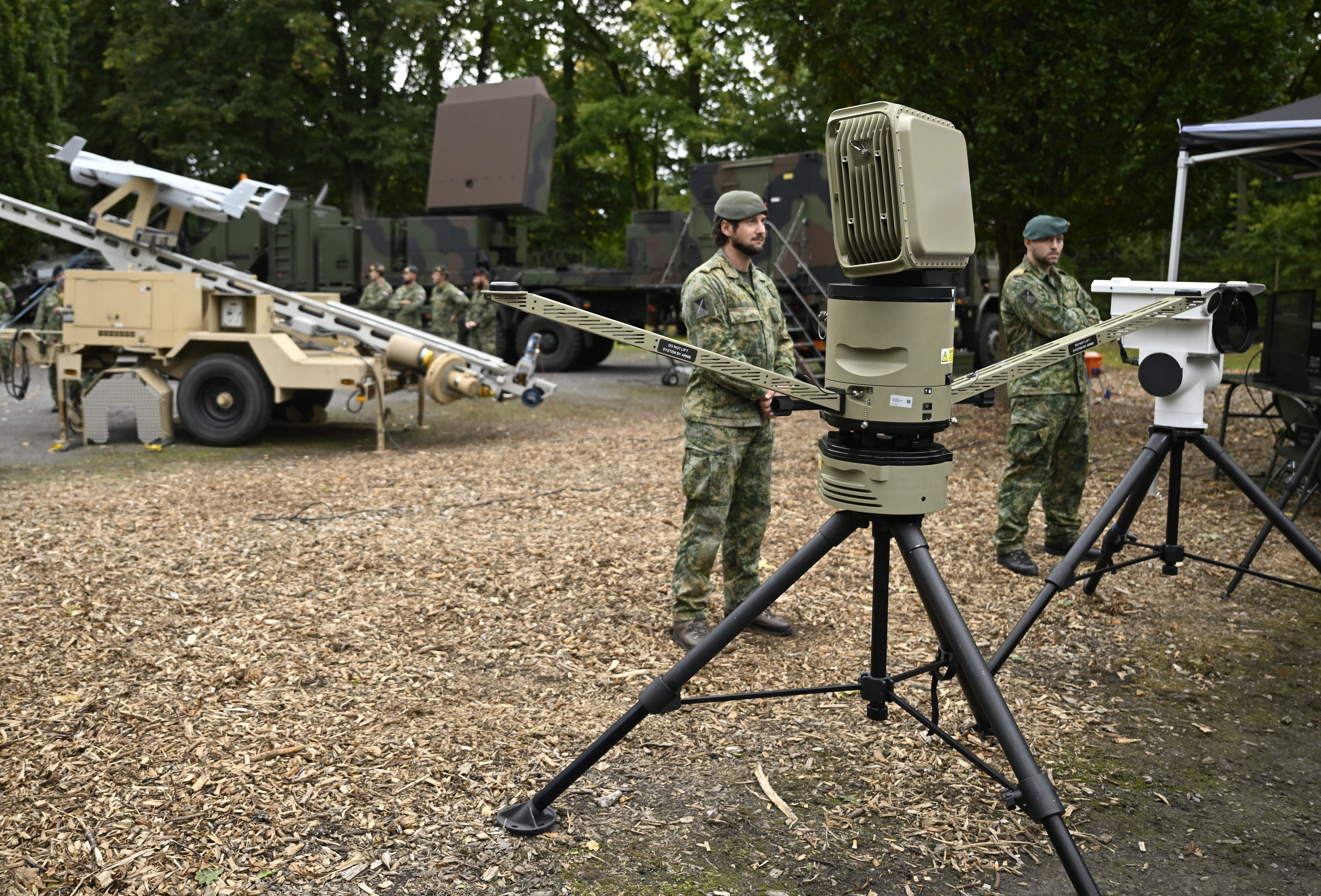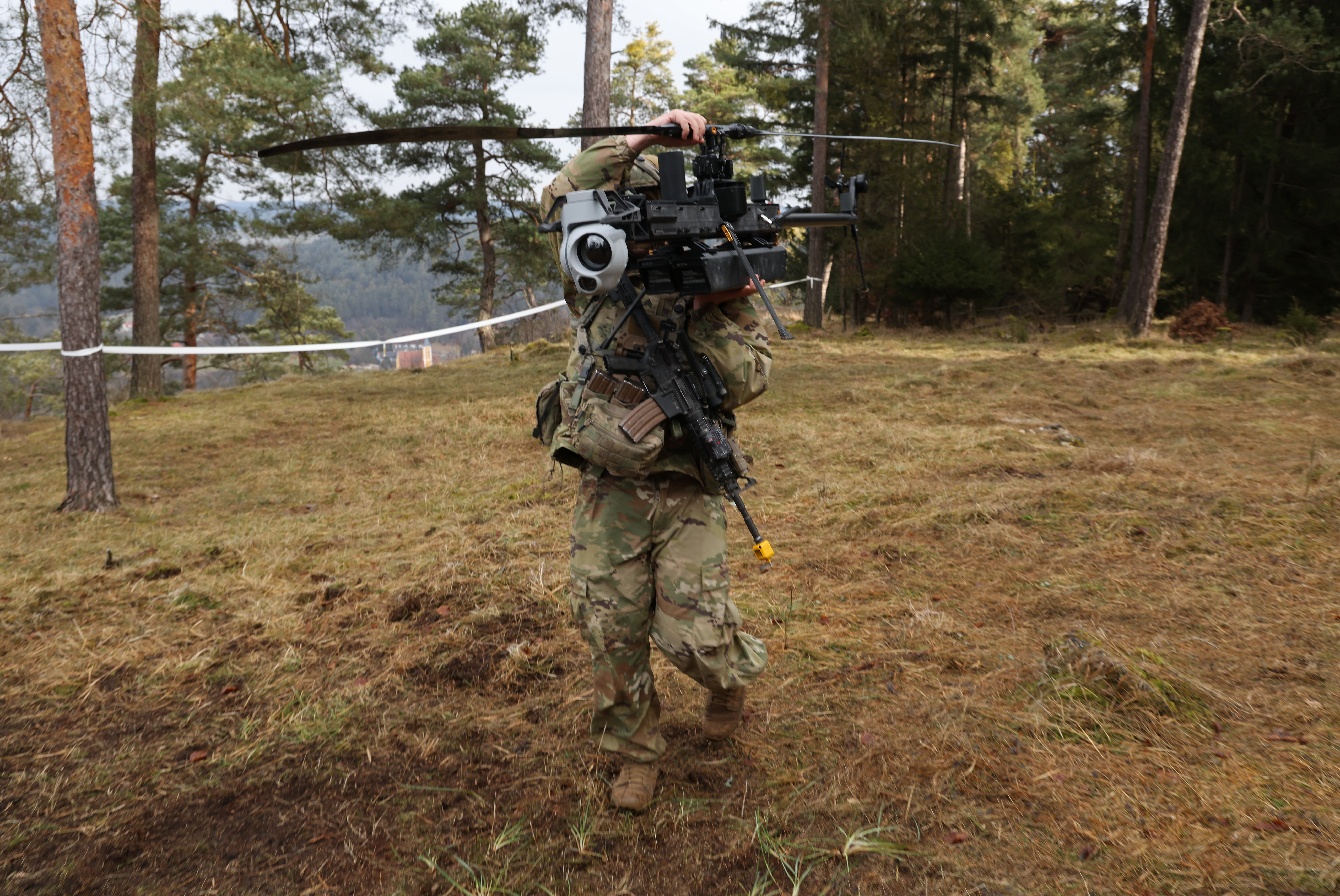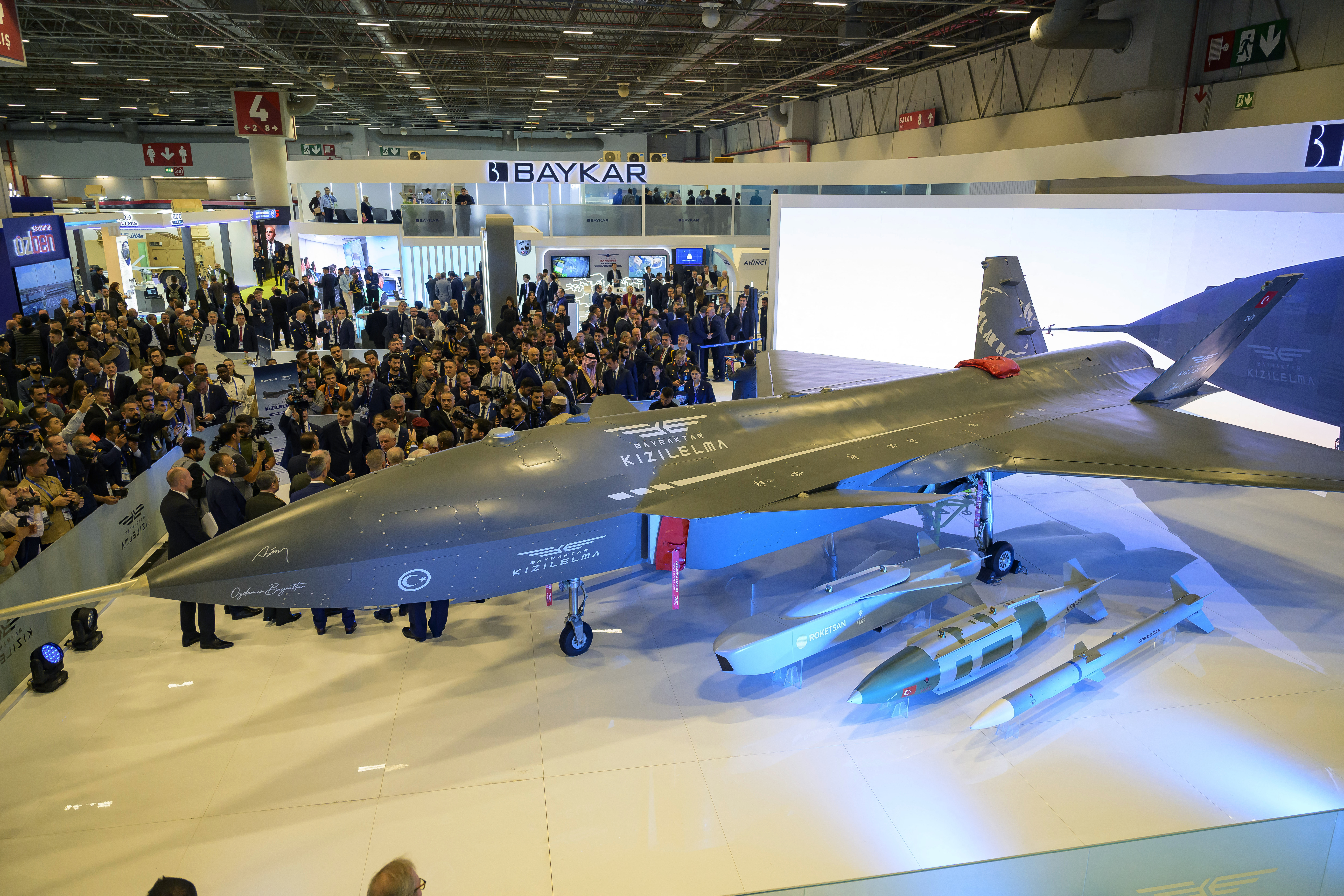
A new Sikorsky concept to modify old Black Hawk-series helicopters as uncrewed, autonomous airlifters could give the Air Force another rapid mobility tool as it pursues the Agile Combat Employment model.
Sikorsky, a unit of Lockheed Martin, rolled out its S-70 Uncrewed Aerial System “U-Hawk” at the Association of the U.S. Army technology exposition on Oct. 13. The company modified a Black Hawk helicopter by removing its cockpit and windows, and added a clamshell-type nose door and ramp to permit ease of loading and unloading cargo. The aircraft can be operated using just a tablet by a person with less than an hour’s training, the company said. The helicopter flies using Sikorsky’s “Matrix” autonomy system.
Sikorsky is pitching the concept to the armed services as a way to expand tactical mobility without the need for traditionally-trained pilots or all-new aircraft. Such a concept might be useful to the Air Force, which will need to rapidly move cargo around dispersed, austere operating locations under the ACE concept. When the HH-60J Pave Hawk is fully retired, the Air Force will have some 75 aircraft that could be candidates for a U-Hawk conversion.
Sikorsky declined to offer an estimated cost for a U-Hawk conversion, saying it would depend on the age of the aircraft, the number to be modified and the degree to which other aircraft changes are needed.
The U-Hawk is expected to fly next year. Depending on interest, Sikorsky said it could spool up a modification line “rapidly” and “at scale.” Production could start as early as 2026, with deliveries beginning in 2027, Bentley said.
“This is a fully autonomous UAS, so it definitely requires an operator, not a pilot,” Ramsey Bentley, Sikorsky’s business development director for advanced programs, said in an interview with Air & Space Forces Magazine.
“We’ve been very successful in our demonstrations . . . handing a young soldier our tablet, giving them about 10 to 15 minutes of instructions, and they are able to crank the aircraft, conduct a mission with the aircraft, and then actually shut down the aircraft, all using that tablet interface,” he said, adding that the Matrix autonomy system does the rest.
“The Matrix autonomy system automatically generates a flight plan, relying on cameras, sensors and algorithms to help navigate the U-Hawk aircraft safely to its destination,” Sikorsky said in its press release.
The concept is brand new, so there hasn’t been time for official communications with the Air Force on the U-Hawk, but Bentley said a few Air Force officers visited Sikorsky’s booth during AUSA.
“They’ve looked at the U-Hawk,” he said. “They’re very, very interested in the capability, but we’ve not had any formal discussions to date.”
The U-Hawk would be able to carry a total of 10,000 pounds of cargo—a maximum 8,000 pounds inside the cargo hold or 9,000 pounds slung underneath the aircraft. The modification doesn’t increase the helicopter’s fuel capacity, but internal fuel tanks could be added, as well as external tanks, though Bentley said the latter would increase drag. Sikorsky touts the U-Hawk as being able to “self-deploy” thanks to its autonomy. The Pave Hawk has a range of about 580 miles.
Though Bentley said the U-Hawk’s clamshell doors probably could not clear a standard Air Force pallet, it could accept a half pallet, and Sikorsky said the aircraft can carry up to four Joint Modular Intermodal Containers. The nose of the aircraft also has a ramp permitting a small wheeled vehicle to be carried.
Despite the deletion of the entire cockpit and side windows, the U-Hawk’s special features, like the clamshell doors and ramp, add a net 100 pounds to the airframe, but that doesn’t significantly affect the aircraft’s range, Bentley said.
The Air Force’s retired HH-60Js also have a probe for aerial refueling, which would further expand their reach in a Pacific ACE scenario. Though U-Hawk is not configured with a boom, Bentley said Sikorsky has other options for refueling.
“We could even solve that problem,” he said. “That’s really not an issue, because . . . we would just use a sensor that would pick up the telemetry of the [refueling drogue] baskets and be able to drive in on the basket. So that is definitely in the realm of possibility.”
Sikorsky has not formally proposed the aircraft to the services yet, he said, and it has not developed the U-Hawk toward a stated requirement. The cost of the conversion would depend on how many the services want to modify their aircraft, and whether they want to add any other mission equipment.
The HH-60Js, though well used, could potentially be brought out of retirement for the job, Bentley said.
“It can definitely work on some of the older aircraft,” he said. “We have our Matrix autonomy installed on multiple variants of Black Hawks.”
That includes what Sikorsky calls the OPV Hawk, its first autonomous Black Hawk, according to Bentley. The aircraft flew on its own in 2022 as part of a Defense Advanced Research Projects Agency program.
The “age or vintage” of the aircraft to be modified isn’t a factor for Sikorsky, Bentley noted. The OPV Hawk was a converted UH-60A “of late ’70s vintage,” and the first U-Hawk airframe was a modified 1992 UH-60L. The company is currently finishing an installation on a UH-60M.
For some of the older aircraft, a conversion could involve other life-extending structural modifications, Bentley said, adding that the company would “definitely bring them up to standard.” The Matrix autonomy software will work on any model, he said, and is also applicable to fixed-wing aircraft.
Sikorsky recently unveiled its “Nomad” concept, a series of fixed-wing, vertical-takeoff and landing uncrewed aircraft designed to perform a variety of missions supporting far-flung troops. Nomad also uses the Matrix autonomy software.
For the Army and Navy, Sikorsky is also proposing that the side door of the U-Hawk could be opened and a pallet of missiles could be launched from inside. Alternatively, the aircraft could release swarms of drones.
Besides carrying cargo, Sikorsky touts the aircraft as being able to carry “longer missiles” internally, to resupply firing batteries and aircraft.
Bentley said the aircraft was developed by Sikorsky’s Special Programs shop, and with independent research and development funds.
The post Could Modified Pave Hawks Help the Air Force Support Agile Combat Employment? appeared first on Air & Space Forces Magazine.

Air, agile combat employment, HH-60, Sikorsky, U-Hawk
Air & Space Forces Magazine
[crypto-donation-box type=”tabular” show-coin=”all”]

